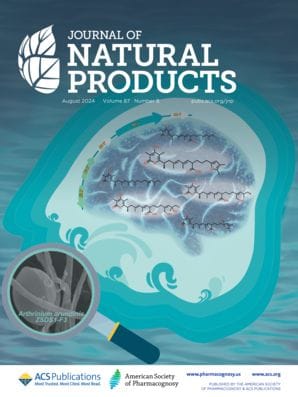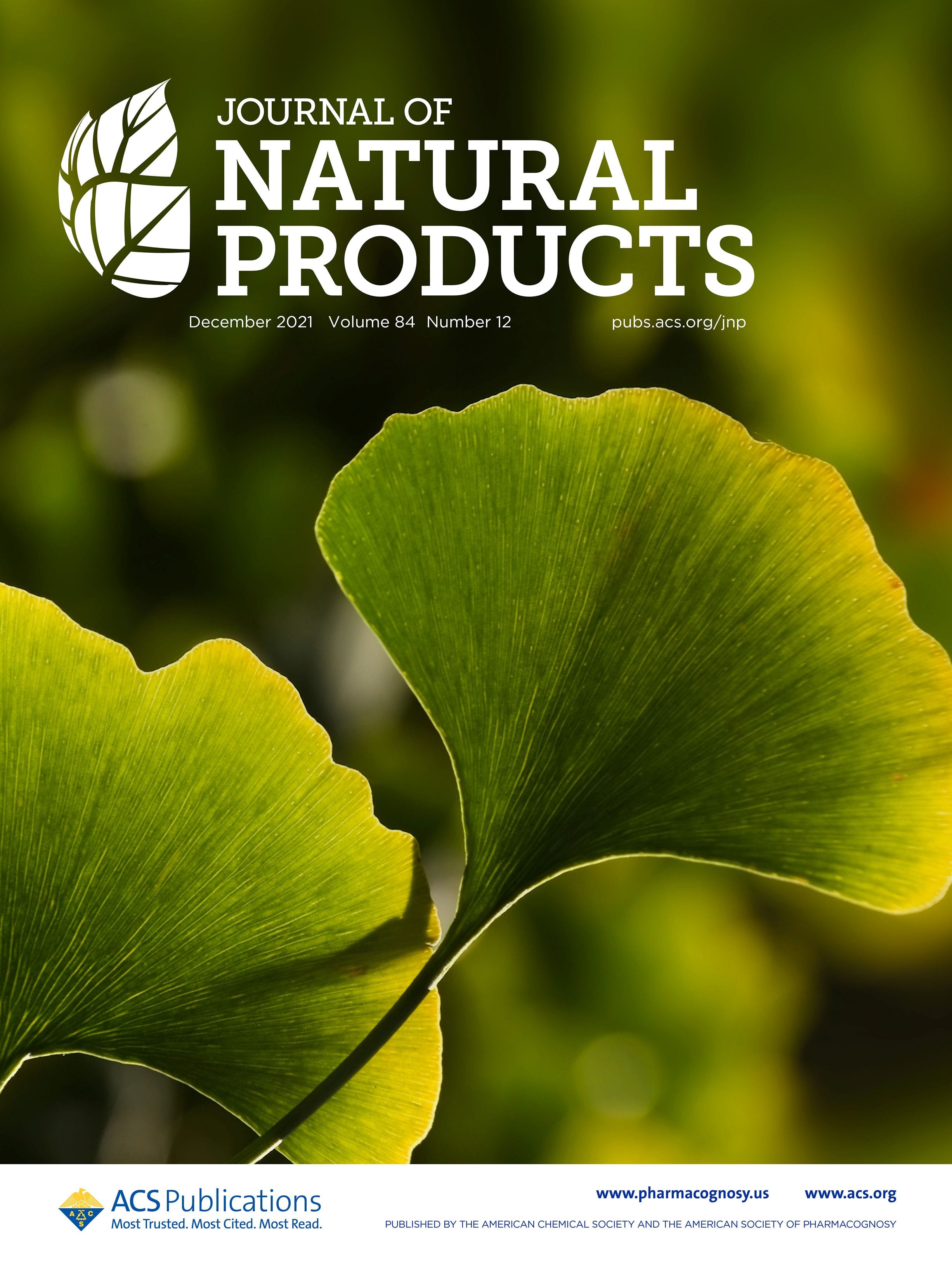Read exclusive interviews with this year's awardees, Nadja Cech and Yudai Matsuda, and learn about their winning papers in the Journal of Natural Products.

The Journal of Natural Products, in partnership with the American Society of Pharmacognosy (ASP), is honored to announce the 2024 winners of the Arthur E. Schwarting and Jack L. Beal Awards. This initiative was launched in 2001 by the Foundation Board of ASP to honor two distinguished former editors of the journal and recognize some of the best works published in the Journal of Natural Products.
Meet Nadja B. Cech, Winner of the Arthur E. Schwarting Award

Dr. Nadja B. Cech is Patricia A. Sullivan Professor of Chemistry at the University of North Carolina Greensboro. She supervises a dynamic research group engaged in developing novel mass spectrometry metabolomics approaches to solve challenging problems in natural products research. Read the winning paper as well as an exclusive interview with Dr. Cech's team below.

Interaction Metabolomics to Discover Synergists in Natural Product Mixtures
DOI: 10.1021/acs.jnatprod.2c00518
Can you give a short overview of the research you are currently undertaking?
The Cech Research Group focuses on finding molecules from nature that are useful in the treatment or prevention of infectious disease. Towards this goal, we develop mass spectrometry metabolomics methods to identify biologically active constituents in complex mixtures. Our group is particularly focused on developing effective strategies to identify combinations of molecules that work together to achieve a biological effect—a phenomenon that is sometimes referred to as molecular synergy. The paper that is being recognized with the Schwarting award described a new method for identifying synergists called "interaction metabolomics."
How was the process of collaborating with your co-authors on this award-winning paper?
This project was achieved thanks to a collaboration that spanned the US, Canada, and Europe. Dr. Warren Vidar, who recently graduated with his Ph.D. from the Cech Laboratory, deserves the majority of the credit for this work. He spent five years devising the experimental system that would enable us to test the interaction metabolomics method and carrying out countless meticulous experiments.
We were also fortunate to collaborate with Dr. Roger Linington, Professor of Chemistry at Simon Fraser University; Dr. Tim Baumeister, a former Postdoctoral Researcher in the Linington Laboratory; and Dr. Olav Kvalheim, Professor Emeritus of Chemistry at the University of Bergen in Norway. Dr. Linington and Dr. Kvalheim conceived of the idea of creating 'interaction terms' which are generated by multiplying the peak areas of individual features in the metabolomics dataset together. Dr. Baumeister was very engaged with the extremely complex data interpretation required for this project, working alongside Dr. Vidar with Dr. Kvalheim's guidance.
The data for this project were collected in the Triad Mass Spectrometry Facility at the University of North Carolina Greensboro, under the direction of Dr. Daniel Todd. Dr. Todd contributed many creative solutions to myriad problems that arose in developing the experimental system.In the early stages of this project, Dr. Lindsay Caesar (former graduate student in the Cech Laboratory, now Assistant Professor of Chemistry at James Madison University) and Dr. Joshua Kellogg (former postdoc in the Cech Laboratory, now Assistant Professor at Penn State University), helped brainstorm how we might carry it out and contributed essential creative ideas for experimental design. The project also builds on related work that they did during their time in the Cech Laboratory. Dr. Cech was responsible for leading the team, translating among the various groups, and helping to solve problems as they arose. She also worked with Dr. Vidar to draft the manuscript and create the figures. We were fortunate to have funding from the National Center for Complementary and Integrative Health and the Office of Dietary Supplements, both components of the National Institutes of Health.
Why did you choose to publish with the Journal of Natural Products, and why do you like publishing with the journal?
We love publishing in the Journal of Natural Products because of the rigorous peer review process, the amazing support of the editorial team, and the extensive readership among the natural products community. It is an honor to have our work published by the Journal of Natural Products and a particular honor to be recognized with this award.
Meet Yudai Matsuda, Winner of the Jack L. Beal Award

Dr. Yudai Matsuda is an Associate Professor for the Department of Chemistry at the City University of Hong Kong. His research interests include biosynthesis, genome mining-directed discovery, and biosynthetic engineering of natural products. Read our interview with Dr. Matsuda below as well as his winning paper.

Biosynthetic Characterization, Heterologous Production, and Genomics-Guided Discovery of GABA-Containing Fungal Heptapeptides
DOI: 10.1021/acs.jnatprod.2c0106
Can you give a short overview of the research you are currently undertaking?
Our research group focuses on fungal natural products. We aim to understand their biosynthetic mechanisms, discover novel metabolites from fungi, and create engineered pathways for natural product analogues. Currently, we are particularly interested in the genome mining-guided discovery of fungal natural products and unusual biosynthetic enzymes. To this end, we have recently developed a genome mining tool named FunBGCeX to efficiently identify biosynthetic gene clusters for unexploited fungal natural products. Additionally, we are working to improve the Aspergillus oryzae expression system to readily obtain metabolites derived from such gene clusters. For example, the method reported in this paper allows for the efficient introduction of large biosynthetic genes into the fungal host. We hope to further expand the diversity of natural products and the repertoire of biosynthetic enzymes using our genome mining platform.
How was the process of collaborating with your co-authors on this award-winning paper?
This work was performed with one of my Ph.D. students, the first author of the paper, and two undergraduate students who joined my group for their final year projects. Since this was my first project on nonribosomal peptides, I learned a lot about peptide research alongside the students, and together we conducted many new experiments. It took nearly four years to publish this work from when we started, and although not all the co-authors were still in the group at the time of publication, everyone contributed significantly to the project's success.
Why did you choose to publish with the Journal of Natural Products, and why do you like publishing with the journal?
We chose to publish with the Journal of Natural Products because it is a prestigious journal that covers all aspects of natural product research. In particular, there have been many high-quality papers on natural product biosynthesis in recent years, which made us think it was an excellent venue for our paper. What is remarkable about the journal is the dedication of the editors to the manuscripts. This paper received valuable and constructive comments from not only the reviewers but also the handling editor, Dr. Philip J. Proteau, which significantly improved our work.

Read the Latest Issue of the Journal of Natural Products

